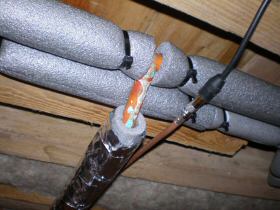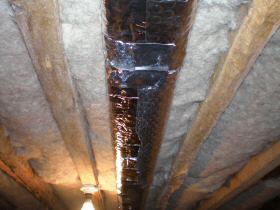Now and then I search google for an answer to a question and don’t get a good answer, and this time I’m doing my bit for the greater good to answer these:
“Is it worth putting foam insulation lagging on hot water pipes?”
“Is it worth putting reflective foam insulation around lagged hot water pipes”
“What is the difference in insulation between no pipe-lagging, foam pipe-lagging and foam plus foil lagging?”
Yup, this isn’t about games :D
background: i have a cold old house with a freezing cellar, and the last occupant did NO insulation. The hot water pipes for the radiators go under the floor in the cellar ceiling, exposed to the cold and damp draughty cellar. A lot of my heating costs were being wasted heating up a damp cellar we never use. So this needed fixing.
Now there is ‘reading books and believing them” and then there is “getting real data”, so I went and got one of these (an infared thermometer £20)

Then I lagged some pipes using that foam insulation stuff, tied on with cable ties. Then as an experiment I doubled up on them by also wrapping that foil stuff you get for the back of radiators around them too, and took measurements. Heres a picture showing all 3 scenarios, where I haven’t finished yet (I ran out of tape…)

With NO lagging, and the radiators on, the temperature of the exposed copper pipes was 57 degrees.
With just tied-on foam insulation, the temperature of the foam was 21 degrees. ( a reduction of 63%ish)
With tied on foam AND a layer of reflective radiator foil, the temperature of the external foil was 12 degrees. (a further reduction of 15%ish)

Obviously the lower the temperature the better, I want all that heat kept in the pipes going to my radiators, not leaking out into the cold air of the cellar.
Conclusion: it is HUGELY worth you lagging any pipes in unused unheated rooms with foam insulation. It is also very worthwhile wrapping the lagged pipes with a layer of reflective radiator foil. I tape it up with special reflective tape and both the tape and the foil is dirt cheap. The foam tubes are about 50p each.
If you pay heating bills where you live, you would be mad not to do this :D
And if you don’t know where the heat goes, get an infared thermometer. They double up as laser pointers to entertain cats.